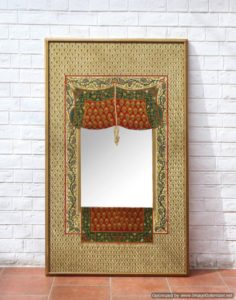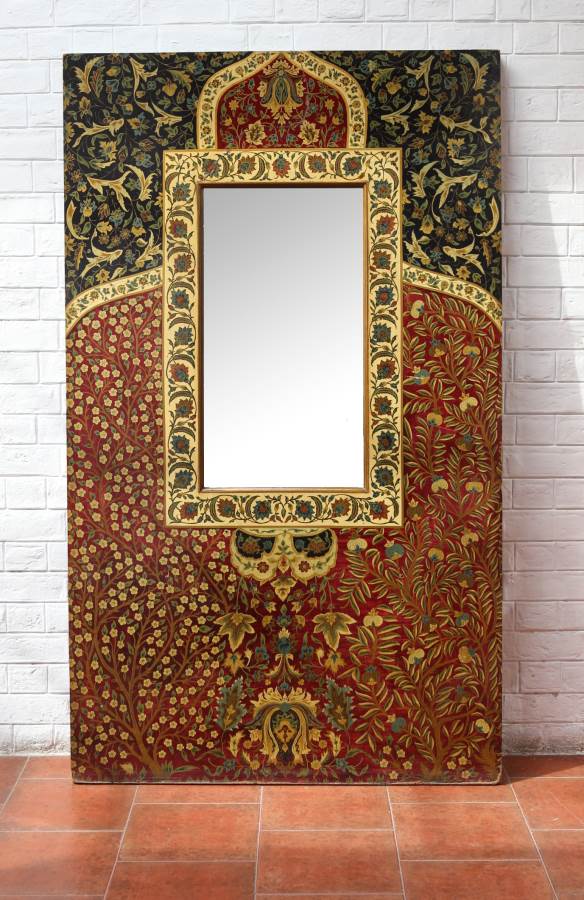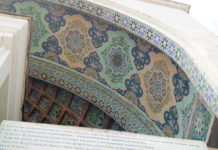Naqaashi is the ancient art of painting on buildings, woodwork, camel skin and pottery centred in the ancient city of Multan, Punjab. Originating from Iran, the craft was established some 300 years ago in Pakistan.
The basic technique begins by making pinholes in the design paper and dabbing it with black powder in a pouch onto the surface. The design is outlined with a dark blue pigment and filled in with colours—mainly minerals derived from earths and stones. The finished work is finally burnished with a cawri (shell) to give it a smooth, hard surface. The work is usually divided into small portions that can be completed within a day.
 With camel skin lamps, the skin is first washed thoroughly with chemicals and excess layers removed to make it translucent. It is then fixed to a clay base, dried, and a die is used to make its final shape. After it is painted using the technique mentioned previously, it is sealed with a final coat of lacquer.
With camel skin lamps, the skin is first washed thoroughly with chemicals and excess layers removed to make it translucent. It is then fixed to a clay base, dried, and a die is used to make its final shape. After it is painted using the technique mentioned previously, it is sealed with a final coat of lacquer.
For naqaashi done on walls, there are two methods. In fresco, the paint is applied to freshly plastered walls so the paints bind with them as they dry. The pigments are mineral and the medium is water-based. In fresco secco, as the paint is applied after the plaster has dried, it must be mixed with a binding agent such as ganda baroza (resin lacquer). With fresco, artisans are only able to work over a small area before the plaster dries, whereas with secco there is no time limit, though this technique is less permanent.
Given its Sufi roots, naqaashi avoids representational painting and instead uses floral and geometric patterns. Some notable ustaads (masters) of this craft include Ustaad Saifur Rahman, Rafaqat Ali and Abdul Rehman Naqash.
Though the craft has undergone a decline due to shrinking patronage, efforts by individuals and state institutions have helped in the survival, if not flowering, of this exquisite art form.





